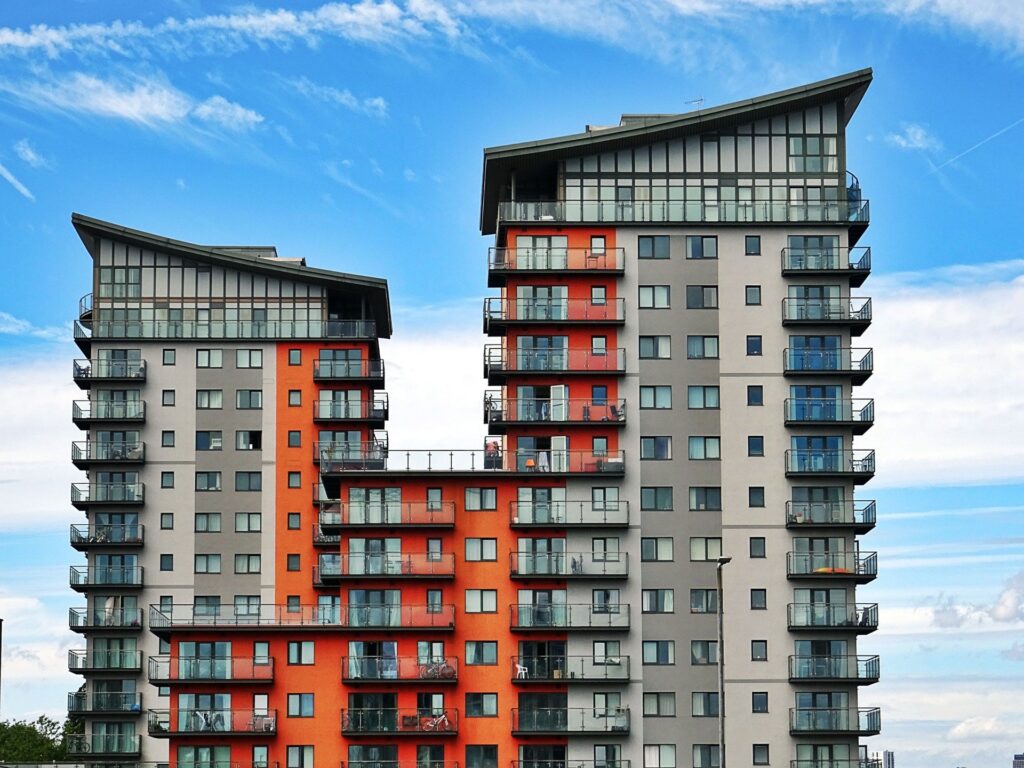Most people do not realize that there are different types of buildings in construction, but those who work in the construction field understand the minute differences between all the buildings that they drive past or build each and every day. There are five basic types of buildings in construction, however, there are a few subtypes within most of them.
Here are the types of buildings in construction:
Type I-A
This type of building is fire resistant and non-combustible and they are more commonly seen for high-rise buildings and those buildings with group one occupancies. Type I-A buildings are usually constructed using concrete and steel that is coated with a fire-resistant material. These buildings are constructed to keep fire contained, so that the fire doesn’t destroy the entire structure. The exterior walls and structural frame take up to three hours to burn through, which is usually enough time for firefighters to get everything contained before the building receives a ton of damage. The floors and ceiling can withstand the flames for up to two hours, while the roof offers protection for a little more than an hour.
Type I-B
This building is also fire resistant and non-combustible, but it is more common for mid-rise office buildings and those buildings that are rated as group R. Type I-B buildings are also constructed using concrete and steel that is coated with fire resistant materials. The exterior walls and structural frame offer two hours of protection, as does the floor and ceiling separation.
Type II-A
A Type II-A building is considered protected non-combustible and this type of building is normally used for newer school buildings. These buildings are normally constructed with masonry or tilt slab for the walls and metal for the roof. The materials that are used during the construction process ensure that the exterior walls, structural frame, and the ceiling, floor, and roof are protected for up to an hour. Of course, most of these buildings also include fire suppression systems, which ensures that the fire can be put out quickly.
Check out here: 8 types of infrastructure on construction projects
Type II-B
These buildings are considered unprotected non-combustible and they are the most popular non-combustible options for commercial buildings. These types of buildings are constructed from non-combustible materials, but they do not offer any type of fire resistance at all. It is important that fire suppression systems are installed in these buildings, as the non-existent fire resistance means that the building can be destroyed quickly without them.
Type III-A
A Type III-A building is considered protected combustible and it is what is most common within the normal construction industry. The materials used during this construction are bricks or block walls, as well as wood for the roof or floor. The exterior walls are protected from fire for up to two hours, but the structural frame and floor, ceiling, and roof only see an hour of protection.
Type III-B
Type III-B buildings are considered unprotected combustible, which is also common in the construction industry, but these buildings are normally found in the warehouse districts in older cities around the world. The exterior walls offer up to two hours of fire protection, but the rest of the construction offers no fire resistance at all. That means that the structural frame, ceilings, floors, and the roof can instantly be damaged or completely destroyed when fire breaks out.
Type IV
Type IV is the only type of buildings in construction that do not have subcategories, due to its heavy timber designation. This type of building construction is also known as mill construction and in order for the building to meet the requirements of this type, all the wood must have a minimal dimension of at least eight inches. The exterior walls of this construction building type can be mostly safe from fire for up to two hours, while the structural frame or heavy timber is only safe for an hour. The heavy timber of the floor, ceiling, and roof assemblies has a shorter period of time where fire won’t spread.
Type V-A
Type V-A buildings are considered protected wood frame, and it is common in newer apartment buildings. No wood is exposed or visible in these buildings, which ensures that the exterior walls, structural frame, ceiling, floor, and roof are protected from fire for up to an hour.
Type V-B
The unprotected wood frame is what is found in Type V-B buildings in construction and these are commonly single-family homes and garages. These buildings usually have wood exposed, which means that there is no fire resistance at all.
A couple of these types of buildings are not as common in the construction industry as all the rest, but that doesn’t mean that a contractor or other construction professional will not see each type at least once during their career.




